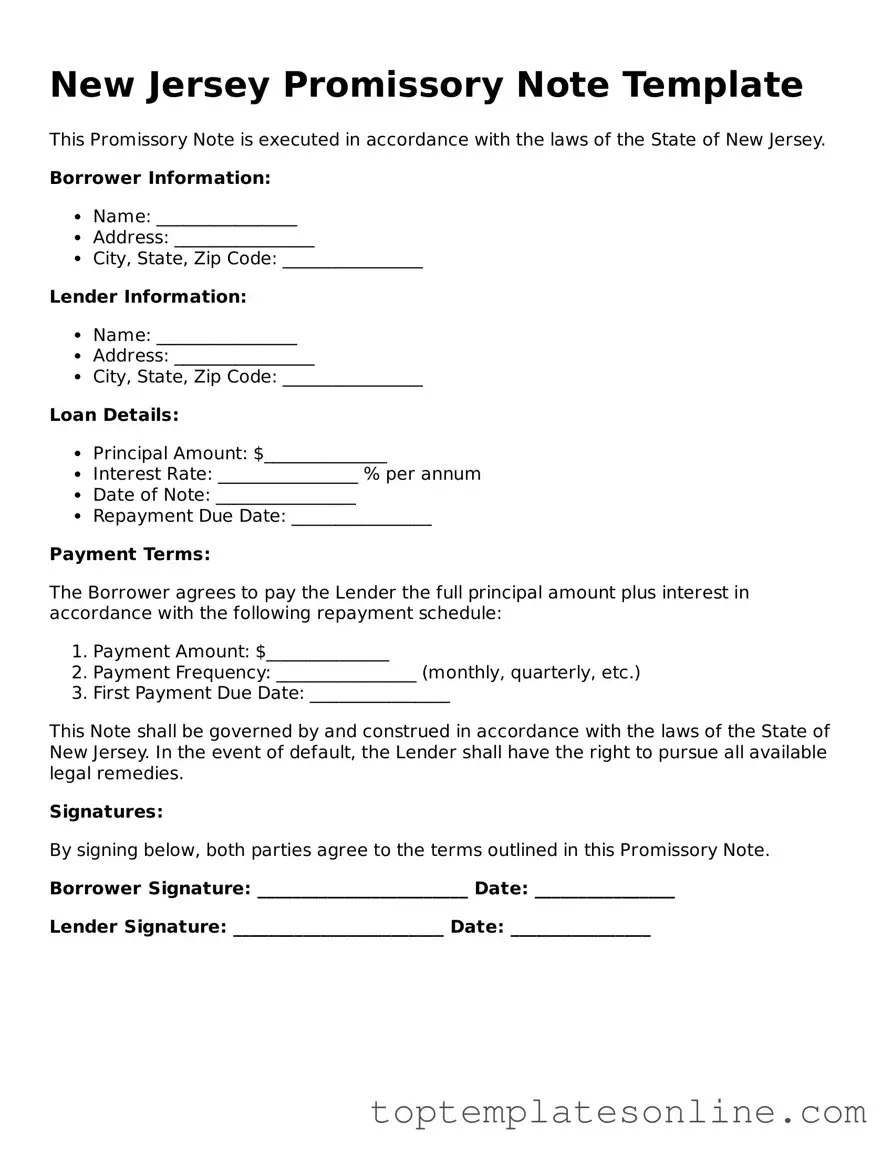Blank Promissory Note Template for New Jersey State
A New Jersey Promissory Note is a written promise to pay a specified amount of money to a lender at a designated time or on demand. This document outlines the terms of the loan, including interest rates and repayment schedules, ensuring both parties understand their obligations. By using this form, borrowers can formalize their commitment while lenders gain security in their investment.
Customize Promissory Note Here
